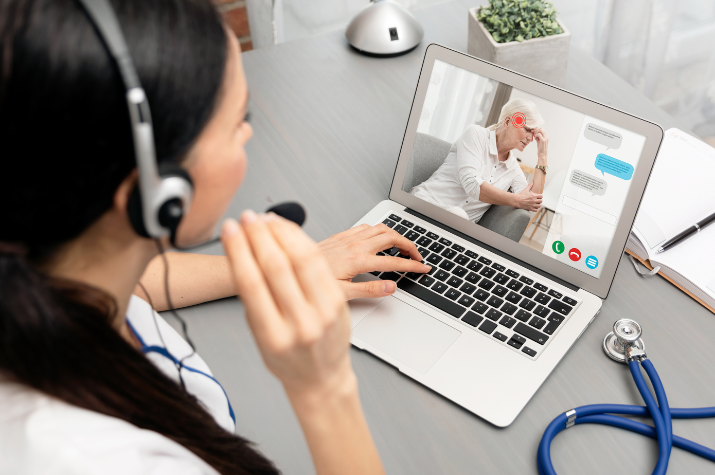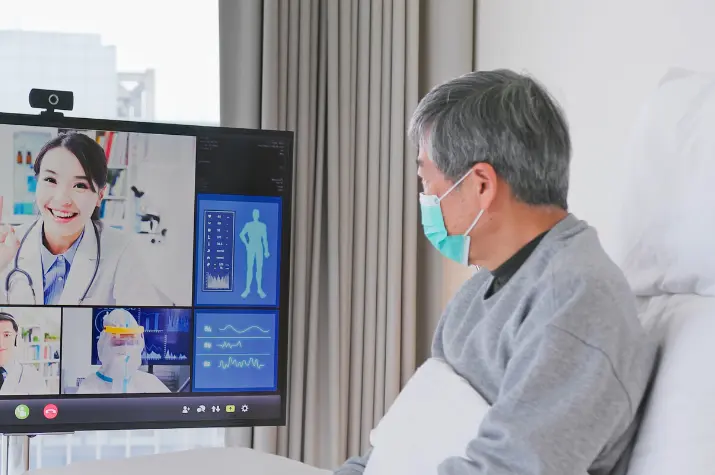
The landscape of urgent care is undergoing a significant transformation, driven by the advent of telehealth and remote diagnostics.
These technologies promise to make healthcare more accessible, efficient, and cost-effective, marking a pivotal shift in how urgent medical services are delivered.
The Rise of Telehealth and Remote Diagnostics
The COVID-19 pandemic served as a catalyst, rapidly accelerating the adoption rate of telehealth services worldwide.
This shift was driven by necessity, as traditional face-to-face medical consultations became challenging due to social distancing measures and the risk of virus transmission. Governments and healthcare providers quickly pivoted, expanding telehealth regulations and infrastructure to support this surge in demand.
As a result, a broad spectrum of healthcare services, from general consultations to specialized care, became accessible online. This digital transformation has demonstrated the resilience and adaptability of the healthcare sector, highlighting telehealth’s potential to bridge gaps in care accessibility and continuity.
Benefits of Telehealth in Urgent Care
Telehealth has significantly reshaped the landscape of urgent care, offering numerous advantages that benefit both patients and healthcare providers.
For individuals living in remote, rural, or underserved regions, telehealth has emerged as a lifeline, providing them with much-needed access to medical professionals and services that were previously out of reach. This has been particularly crucial for urgent care, where timely access to healthcare can be a matter of life and death.
Additionally, telehealth has dramatically reduced the burden on traditional healthcare facilities, decreasing wait times and enabling more efficient use of resources. For healthcare providers, telehealth represents an opportunity to extend their reach and offer services more broadly, without the need for additional physical infrastructure.
Financially, it reduces operational costs associated with in-person visits, such as staffing and space requirements, while also providing a convenient and efficient way to manage patient care.
Remote Diagnostics: A Closer Look
What are Remote Diagnostics?
Remote diagnostics stand at the forefront of the telehealth revolution, encompassing a suite of technologies that empower healthcare professionals to perform diagnostic assessments without the need for physical interaction.
This field has evolved beyond simple teleconsultations to include sophisticated diagnostic capabilities, such as remote monitoring devices, digital stethoscopes, and advanced imaging techniques.
X-rays, for instance, are crucial for diagnosing a wide array of conditions, from bone fractures to pneumonia, and can now be initiated remotely with follow-up analyses conducted online. The integration of AI and machine learning technologies has been a game-changer, enhancing the precision of diagnostic tools.
These technologies can analyze vast amounts of data, recognize patterns, and provide insights that support clinical decision-making, leading to more accurate diagnoses and personalized treatment plans.
Advantages Over Traditional Methods
The advantages of remote diagnostics over traditional diagnostic methods are significant. They offer a faster, more efficient pathway to diagnosis, allowing healthcare professionals to make informed decisions quickly.
For patients with chronic conditions, remote monitoring can be a transformative approach to managing their health, enabling continuous care without the need for frequent hospital visits. This not only improves the quality of life for patients but also optimizes healthcare resources.
Moreover, remote diagnostics contribute to a more sustainable healthcare model by reducing the carbon footprint associated with travel to healthcare facilities and decreasing the physical infrastructure required for care delivery.
Read also: How Telemedicine Works & Supports the Healthcare System?
Integration of Telehealth in Urgent Care: A Seamless Approach

The integration of telehealth and remote diagnostics within urgent care settings has showcased the potential of digital health technologies to revolutionize medical care.
For example, patients presenting with symptoms indicative of acute conditions can be quickly assessed through telehealth platforms, directed to perform necessary diagnostic tests at nearby facilities and receive a diagnosis and treatment plan without ever setting foot in a traditional urgent care center.
This model not only improves patient outcomes but also enhances the efficiency of healthcare delivery.
Challenges and Solutions
Despite the clear benefits, the widespread adoption of telehealth and remote diagnostics is not without challenges.
Data security and privacy concerns top the list, as the digital handling of sensitive patient information presents new risks. Healthcare providers must implement robust cybersecurity protocols and comply with regulations like the Health Insurance Portability and Accountability Act (HIPAA) in the United States to protect patient data.
Technological barriers also pose significant hurdles, particularly in rural and underserved areas where access to reliable internet and digital devices may be limited.
Addressing these challenges requires a multifaceted approach, including investment in infrastructure, digital literacy campaigns for both patients and providers and policies that support the equitable distribution of telehealth services.
Read more: How Can You Get Started With Digital Health?
The Future Landscape of Urgent Care
Predictions and Innovations
Wearable health monitors, for example, are expected to become more prevalent, offering continuous health monitoring and generating valuable data that can enhance preventive care and early intervention strategies.
Telehealth platforms are anticipated to evolve, incorporating more advanced diagnostic capabilities and AI-driven tools for personalized care recommendations.
Additionally, legislative and regulatory landscapes are likely to adapt to support the expanded use of telehealth and remote diagnostics, addressing licensing, reimbursement, and privacy concerns to facilitate wider adoption.
These innovations will not only enhance the efficiency and effectiveness of urgent care but also make healthcare more proactive and patient-centered.
Preparing for the Digital Shift
To thrive in the rapidly evolving healthcare landscape, providers must embrace the digital shift, investing in technology and infrastructure that support telehealth and remote diagnostics.
This includes adopting secure and user-friendly platforms, integrating digital health tools into existing care models, and ensuring robust data protection measures are in place.
Equally important is the focus on training healthcare professionals to effectively utilize these technologies, ensuring they can deliver high-quality care remotely. Educating patients about the benefits and functionalities of telehealth services is critical to fostering acceptance and confidence in using these digital health solutions.
As providers and patients alike become more accustomed to the conveniences and efficiencies of telehealth, the digital shift in urgent care will continue to gain momentum, setting a new standard for accessible, patient-centered healthcare.
Conclusion on Telehealth and Remote Diagnostics
Telehealth and remote diagnostics represent the future of urgent care, offering a blend of efficiency, accessibility, and cost-effectiveness. As these technologies continue to evolve, they promise to further enhance patient care, making urgent medical services more accessible than ever before. The ongoing digital revolution in healthcare is not just transforming urgent care; it’s redefining the entire healthcare experience.
The embrace of telehealth and remote diagnostics in urgent care is an exciting development, promising a future where healthcare is more accessible, efficient, and patient-centered. As we continue to navigate this digital revolution, staying informed and adaptable will be key to leveraging these technologies for the betterment of patient care worldwide.
About The Author:
Stacey Smith is a freelance health writer. She is passionate about writing about women’s health, dental health, diabetes, endocrinology, and nutrition and provides in-depth features on the latest in health news for medical clinics and health magazines.




